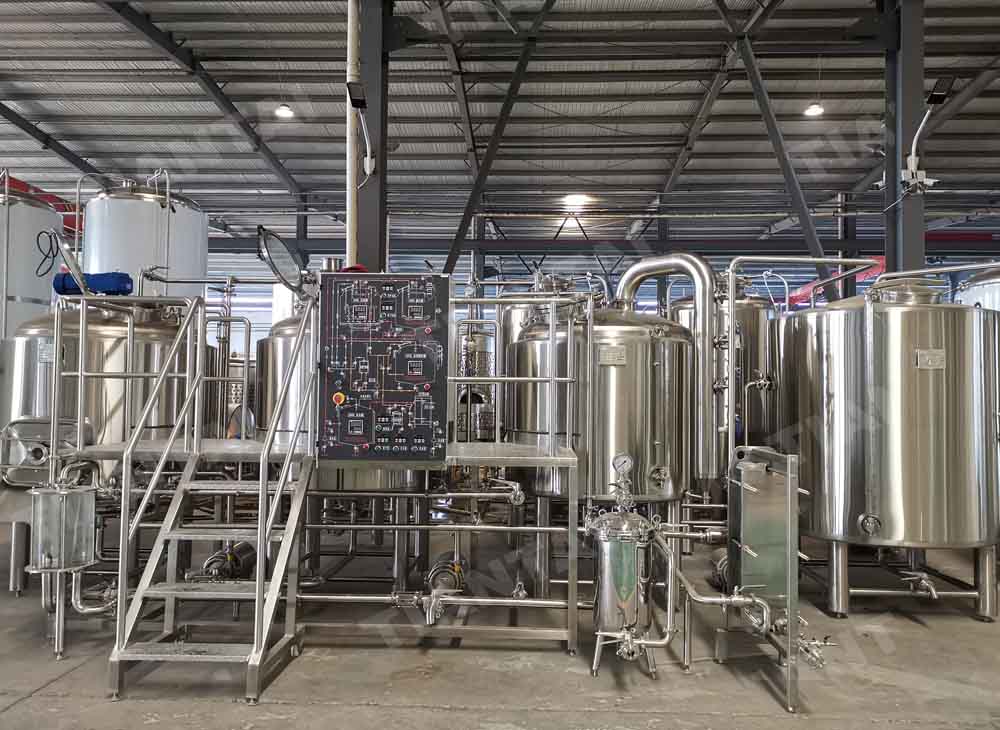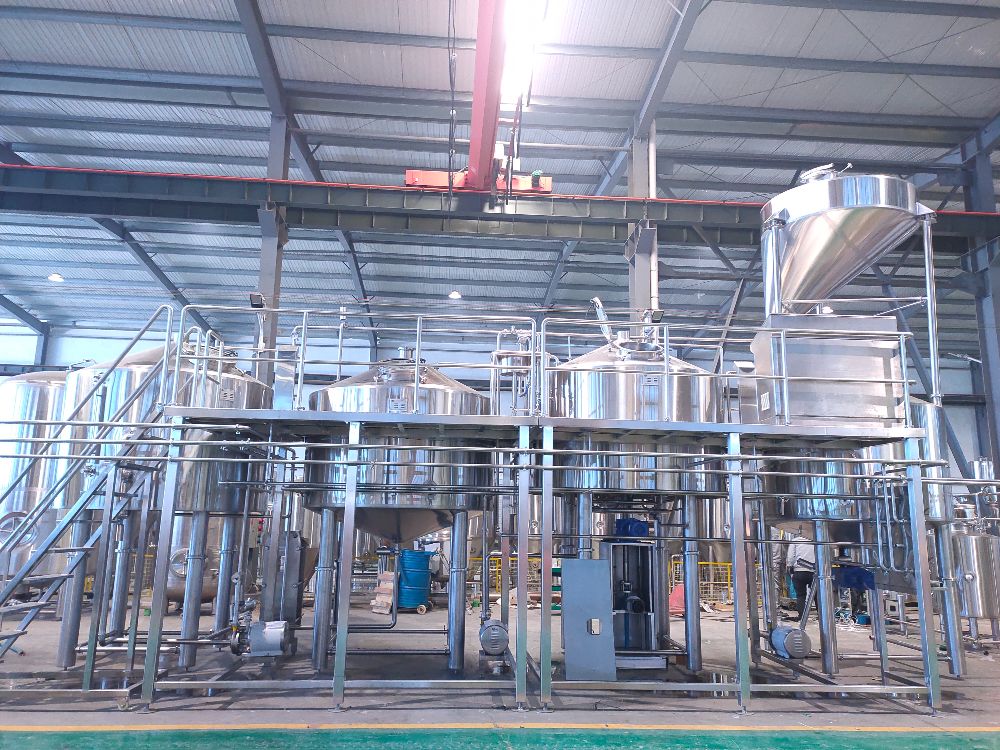2-vessel, 3-vessel, 4-vessel Brewhouse
- Jun 02, 2021
- 170
- tiantai
If homebrewing is a bike, after that a 2-vessel brewhouse is your ordinary vehicle, as well as a 4-vessel brewhouse is a Tesla Roadster. Numerous individuals finish to cars and trucks, generally some low-cost or made use of trip to obtain them about. Simply put, the brewhouse transforms smashed grain, water, and also jumps right into wort. Despite if you're utilizing a 60-barrel 4-vessel or a 8-gallon pot totally automated item of German design, they all offer the exact same standard feature. From there the wort temperature level declines, transferred to fermenters, as well as yeast contributed to transform the wort to beer, yet that's a tale for an additional day.
3-vessel and also 2-vessel Brewhouses
2-vessel brewhouses exist in the large bulk of American craft breweries. Typically varying from 3-barrel as much as 50-barrel systems.
2-vessel typically indicates one vessel for the mash/lauter tun and also one more for the boil kettle/whirlpool. Which is precisely the arrangement which lots of makers have. The MLT obtains the grain as well as warm water; it rests there blending for regarding a hr while the warm water draws the sugar out of the grain. KWT is the boil pot and also whirlpool. The pleasant wort from the mash/lauter tun relocates over as well as boils. Makers include jumps throughout the boil, developing bitter wort. A minor tweak on the 2-vessel system is the 3-vessel arrangement. The 3-vessel brewhouse is some mix of dividing the mash tun as well as lauter tun or maintaining them with each other and also dividing the boil pot as well as whirlpool.
4-Vessel Brewhouse
For a 4-vessel brewhouse you have one vessel for each and every action, mash tun, lauter tun, boil pot, as well as whirlpool.
Each component of the 4-vessel system runs the like the mix of its 2-vessel equivalents. The amazing benefit of the 4-vessel system can be found in the capacity to execute multiples actions at the very same time. With a system this huge, it can pump the whole mash, grain and also fluid, from the mash tun over to the lauter tun. We has a 3-inch shutoff in between the vessels. This shutoff permits relocating every little thing over to the lauter tun and also start cleansing the mash tun for the following set. The wort stays in the lauter tun for the 100-minute lauter procedure. Lautering, be it in 4-vessel, 2-vessel, is merely the procedure of cleaning the grain to quit saccharification (sugar conversion) as well as guarantee you obtain all sugar from those grains. Each little bit of sugar raises your brewhouse effectiveness. On a 4-vessel system. As soon as wort have actually been lautered as well as pumped over to the boil pot we begin mashing right into the mash tun once again. On a 2-vessel system, after lautering as well as pumping over to the boil pot you would certainly need to mash out all the grain and also tidy the mash/lauter tun prior to having the ability to begin once again.
There is no distinction in the boil pot for a 4-vessel as well as 2-vessel system, they both take the wonderful wort, steam it (typically for 60 mins).
Once more, the considerable benefit of the 4-vessel system comes with the capability to run the private items all at once. The 4-vessel system, as well as the limited timing they have actually established, conserves 3 hrs of each mixture day vs 3-vessel system.
If you have any longer concerns regarding 4-vessel brewhoues leave a comment/email as well as I'll discover a solution for you. Any kind of various other components of the brewery you wish to know regarding? Simply allow me understand and also I'll obtain it done!

3-vessel and also 2-vessel Brewhouses
2-vessel brewhouses exist in the large bulk of American craft breweries. Typically varying from 3-barrel as much as 50-barrel systems.
2-vessel typically indicates one vessel for the mash/lauter tun and also one more for the boil kettle/whirlpool. Which is precisely the arrangement which lots of makers have. The MLT obtains the grain as well as warm water; it rests there blending for regarding a hr while the warm water draws the sugar out of the grain. KWT is the boil pot and also whirlpool. The pleasant wort from the mash/lauter tun relocates over as well as boils. Makers include jumps throughout the boil, developing bitter wort. A minor tweak on the 2-vessel system is the 3-vessel arrangement. The 3-vessel brewhouse is some mix of dividing the mash tun as well as lauter tun or maintaining them with each other and also dividing the boil pot as well as whirlpool.
4-Vessel Brewhouse
For a 4-vessel brewhouse you have one vessel for each and every action, mash tun, lauter tun, boil pot, as well as whirlpool.
Each component of the 4-vessel system runs the like the mix of its 2-vessel equivalents. The amazing benefit of the 4-vessel system can be found in the capacity to execute multiples actions at the very same time. With a system this huge, it can pump the whole mash, grain and also fluid, from the mash tun over to the lauter tun. We has a 3-inch shutoff in between the vessels. This shutoff permits relocating every little thing over to the lauter tun and also start cleansing the mash tun for the following set. The wort stays in the lauter tun for the 100-minute lauter procedure. Lautering, be it in 4-vessel, 2-vessel, is merely the procedure of cleaning the grain to quit saccharification (sugar conversion) as well as guarantee you obtain all sugar from those grains. Each little bit of sugar raises your brewhouse effectiveness. On a 4-vessel system. As soon as wort have actually been lautered as well as pumped over to the boil pot we begin mashing right into the mash tun once again. On a 2-vessel system, after lautering as well as pumping over to the boil pot you would certainly need to mash out all the grain and also tidy the mash/lauter tun prior to having the ability to begin once again.
There is no distinction in the boil pot for a 4-vessel as well as 2-vessel system, they both take the wonderful wort, steam it (typically for 60 mins).
Once more, the considerable benefit of the 4-vessel system comes with the capability to run the private items all at once. The 4-vessel system, as well as the limited timing they have actually established, conserves 3 hrs of each mixture day vs 3-vessel system.
If you have any longer concerns regarding 4-vessel brewhoues leave a comment/email as well as I'll discover a solution for you. Any kind of various other components of the brewery you wish to know regarding? Simply allow me understand and also I'll obtain it done!




.jpg)
